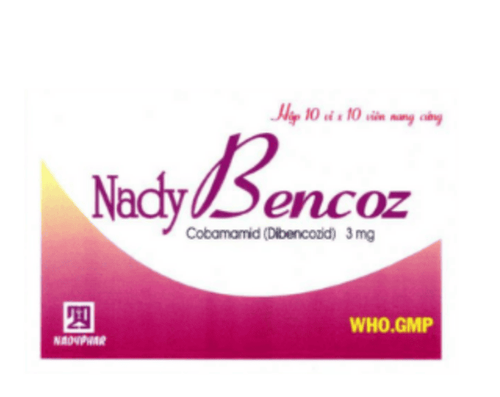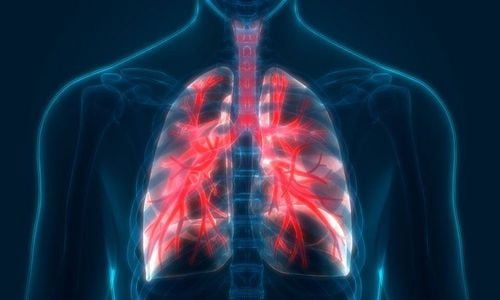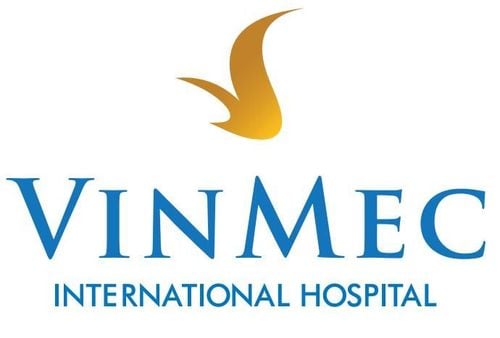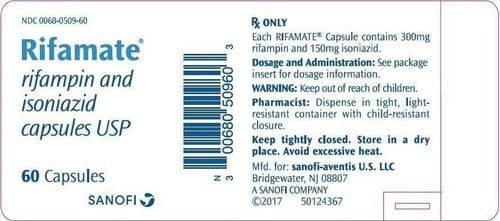This is an automatically translated article.
The article was professionally consulted by Specialist Doctor II Cao Thi Thanh - Pediatrician - Department of Pediatrics - Neonatology - Vinmec Hai Phong International General Hospital. Dr. Thanh has worked for 25 years in the treatment of neonatal pediatric diseases.Premature babies have a higher risk of complications than full-term babies such as infections in premature babies, pneumonia... The following article will provide you with information about some of the complications that babies born before 32 to 34 weeks may be experienced, ranging from mild to severe.
Anemia
Premature babies often have anemia, which means they don't have enough red blood cells in their body. Normally, babies store iron during the last months of pregnancy and use iron later in pregnancy and after birth to make red blood cells. Because babies are born so early, there may not be enough time to build up a supply of iron to make red blood cells.Anemic babies tend to develop feeding problems and grow slower. Anemia can also worsen any heart or breathing problems a child has. Anemic children can be treated with iron supplements, drugs that increase red blood cell production or, in severe cases, the need for a blood transfusion.

Stop breathing
Premature babies sometimes stop breathing for 15 seconds or more. This interruption in breathing is called apnea and it can be accompanied by a slow heart rate.Premature infants are monitored continuously for apnea. If the baby stops breathing, the nurse will stimulate the baby to start breathing by flicking or touching the soles of the baby's feet.
Chronic lung disease
Chronic lung disease, or bronchopulmonary dysplasia (BPD), most commonly affects premature infants requiring ongoing treatment with supplemental oxygen. Newborns at risk for bronchopulmonary dysplasia include those who already have acute respiratory distress syndrome (RDS and those requiring long-term treatment with breathing apparatus and oxygen.These infants have fluid in their lungs, scarring and damage to the lungs, which can be seen on x-rays. Newborns with bronchopulmonary dysplasia are treated with medications that make breathing easier and are slowly weaned off the ventilator.
The lungs of these babies. often improve in the first two years of life, however, many children will develop chronic lung disease that resembles asthma .
Infection
Serious infections commonly seen in premature babies include pneumonia (infection of the lungs), sepsis (infection of the blood), and meningitis (infection of the membranes surrounding the brain and spinal cord).Newborns can get these diseases from their mothers at birth or they can get them after birth. Infections are usually treated with antibiotics or antiviral drugs.
Intraventricular hemorrhage (IVH)
Intraventricular hemorrhage (IVH) or bleeding in the brain occurs in some babies born prematurely, with the youngest babies (weighing about 3 pounds or less) at greatest risk. Bleeding usually occurs during the first three days of life and is usually diagnosed on ultrasound examination.Most bleeding in the brain is mild and goes away on its own with no or little lasting problems. More severe bleeding can cause brain tissue in the ventricles to expand rapidly, putting pressure on the brain that can lead to cerebral palsy as well as learning and behavior problems.
In such cases, the surgeon may insert a tube into the brain to drain the fluid and reduce the risk of brain damage. In milder cases, medication can sometimes reduce fluid buildup.
Jaundice

Also, premature babies may be more sensitive to the ill effects of excess bilirubin. Newborns with jaundice have a yellow color in their skin and eyes. Jaundice is usually mild and is usually not harmful. However, if the bilirubin level is too high, it can cause brain damage.
This is preventable because blood tests can show too high of bilirubin, so your baby can be treated with a special light that helps the body get rid of the bilirubin. Occasionally, a blood transfusion may be required.
Neonatal necrotizing enterocolitis (NEC)
Some premature babies develop this potentially dangerous intestinal problem two to three weeks after birth. The intestines can be damaged when the blood supply is reduced. Bacteria normally present in the intestines invade the damaged area, causing more damage, which can make feeding difficult, abdominal swelling, and other complications.Neonatal necrotizing enterocolitis (NEC) can be diagnosed with diagnostic techniques, such as X-rays and blood tests. Infants with this condition will be treated with antibiotics and given parenteral nutrition while the intestines heal. In some cases, a child will need surgery to remove the damaged bowel.

And ductus arteriosus (PDA)
And the ductus arteriosus (PDA) is a common heart problem in premature babies. Before birth, a large artery called the ductus arteriosus allows blood to pass through the lungs because the fetus takes in oxygen through the placenta.This tube normally closes soon after birth so blood can go to the lungs and get oxygen. When this duct does not close properly, it can lead to heart failure.
And ductus arteriosus can be diagnosed with specialized ultrasound (echocardiography) or other imaging techniques. Newborns with a patent ductus arteriosus are treated with a medicine that helps close the ductus arteriosus, although they may need surgery if medications don't work.
Neonatal respiratory distress syndrome (RDS)
Babies born before 34 weeks of pregnancy often have serious breathing problems, including critical infant respiratory syndrome. This is because babies with this syndrome lack a protein called surfactant that keeps the tiny air sacs in the lungs from collapsing.Treatment with a surfactant helps babies with this condition breathe easier. Since surfactant therapy was introduced in 1990, deaths from RDS have been reduced by about half.
The doctor may suspect the baby has RDS if he has trouble breathing. Chest X-rays and blood tests often help confirm the diagnosis. Along with surfactant treatment, infants with RDS may need extra oxygen and ventilatory support to keep their lungs inflated and prevented from collapsing.
Children can also be treated with a method called Continuous Positive Airway Pressure (CPAP). This technique delivers pressurized air to the child's lungs. Air can be brought in through small tubes in the baby's nose or windpipe.
Retinopathy of prematurity (ROP)
Retinopathy of prematurity (ROP) is an abnormal growth of blood vessels in the eye that can lead to vision loss. This pathology occurs mainly in babies born before 30 weeks of age. ROP is diagnosed while the child is being examined by an ophthalmologist.Most cases of this condition are mild and heal on their own with little or no vision loss. In more severe cases, an ophthalmologist may treat the abnormal vessels with a laser or by freezing them (cryotherapy) to protect the retina and preserve vision.
Caring for premature babies not only requires technique, but also requires the "mind" of a doctor. At Vinmec, doctors and nurses are well-trained, equipped with in-depth knowledge on the treatment and care of premature and extremely premature babies. In order to improve the effectiveness of treatment for premature babies, the Department of Neonatology, Vinmec Hospital is fully equipped with modern supporting machines such as invasive, non-invasive ventilators (nCPAP), weighing incubators, projector lamps, suction machines, monitors, invasive blood pressure monitors... Especially, isolation conditions, cross-infection rooms are guaranteed to the maximum, each child has a separate box and care staff. in a 1:1 ratio at the acute stage. Gestational age and causes of preterm birth are different for each baby. Therefore, with each case, doctors are always cautious in each stage of diagnosis, treatment and child rearing.

Please dial HOTLINE for more information or register for an appointment HERE. Download MyVinmec app to make appointments faster and to manage your bookings easily.














